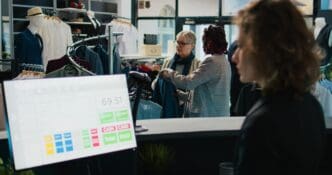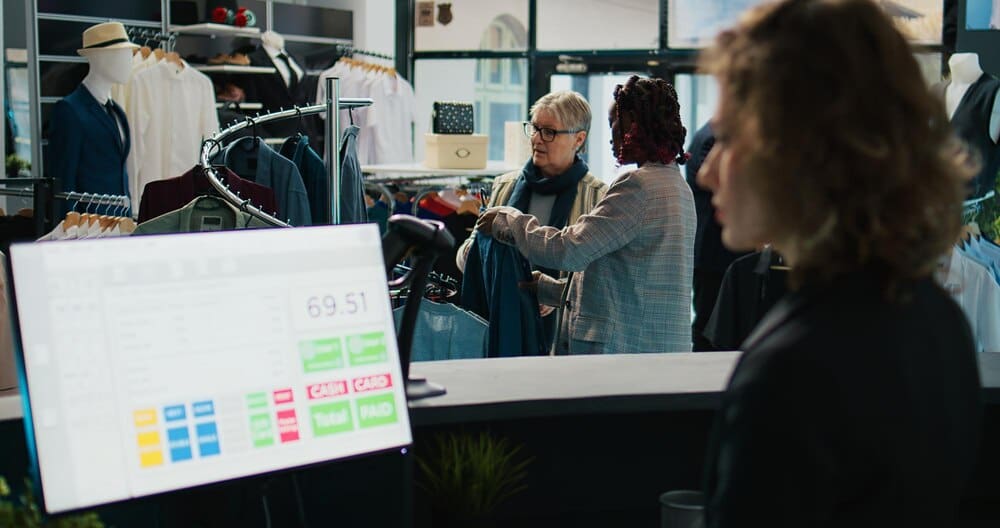KEY POINTS
- Brick-and-mortar retailers are using big data technologies to personalize the physical shopping experience with the same granularity as online stores.
- Tools like in-store Wi-Fi, Bluetooth beacons, and video analytics collect data on customer behavior, foot traffic, and engagement to optimize the in-store journey.
- This technology enables dynamic, hyper-personalized promotions and empowers sales associates with customer insights to provide better recommendations.
In a direct challenge to the data-rich environment of e-commerce, brick-and-mortar retailers are now deploying an arsenal of big data technologies to deeply personalize the physical shopping experience. By leveraging tools like in-store Wi-Fi, Bluetooth beacons, and advanced video analytics, businesses are beginning to understand their customers’ in-store behavior with the same granularity that online stores have enjoyed for years. This strategic shift, happening now in malls and high streets globally, is driven by the urgent need to boost customer loyalty, increase sales, and create unique, compelling experiences that bridge the gap between the digital and physical worlds, ultimately redefining the very nature of in-store retail.
The Great Retail Equalizer: Data in the Physical World
For more than a decade, physical retail has watched as its digital counterparts leveraged a treasure trove of data. Every click, search, and abandoned cart online paints a detailed picture of a consumer’s intent and preferences. This information has allowed e-commerce giants to personalize everything from product recommendations to marketing emails, creating a highly tailored and often frictionless shopping journey.
Brick-and-mortar stores, in contrast, have historically operated in a data-deficient environment. Their primary source of customer data was the final transaction at the point-of-sale (POS) terminal. This provided valuable information on what was bought, but offered little insight into the customer’s journey through the store, what they considered but didn’t buy, or why they chose one product over another.
This information gap is now closing rapidly. The proliferation of smartphones, coupled with the decreasing cost of sensors and data processing, has empowered physical retailers to capture and analyze customer behavior in real-time. The goal is no longer just to sell a product but to understand and optimize the entire in-store journey, making it as relevant and personal as a curated webpage.
The Technology Stack Fueling In-Store Personalization
Creating a personalized in-store experience requires a sophisticated ecosystem of technologies working in concert. These tools are the eyes and ears of the modern retailer, collecting the raw data that, when analyzed, provides actionable insights into customer behavior.
Wi-Fi and Geofencing
One of the most common methods for understanding in-store traffic is through Wi-Fi analytics. When customers with Wi-Fi enabled on their smartphones enter a store, their devices can be anonymously detected by the store’s network. This allows retailers to measure key metrics like foot traffic volume, visit duration, and the percentage of repeat versus new visitors.
By analyzing this data, a store can understand its busiest hours, identify which entrances are most popular, and measure the impact of marketing campaigns on footfall. Geofencing takes this a step further by creating a virtual perimeter around the store, enabling targeted notifications or offers to be sent to customers who have the store’s app and have opted in to receive them.
Beacon Technology
While Wi-Fi provides a macro-level view of the store, Bluetooth Low Energy (BLE) beacons offer granular, aisle-by-aisle insights. These small, inexpensive devices can be placed throughout a store and transmit signals to nearby smartphones. When a shopper with the retailer’s app passes a beacon, it can trigger a specific, context-aware action.
Imagine walking into the electronics department and receiving a push notification with a special offer on the 4K television you were just browsing online. Or, as you linger in the denim section, your phone displays a lookbook of styling ideas. This is the power of beacons: delivering the right message, at the right place, at the right time.
Video Analytics and Computer Vision
Modern security cameras are evolving into powerful data collection tools. Equipped with artificial intelligence and computer vision algorithms, these systems can analyze video feeds to generate anonymous data on customer demographics, traffic patterns, and engagement. This technology can estimate the age and gender of shoppers, track their paths through the store, and create “heat maps” that visualize which areas and displays attract the most attention.
Importantly, these systems are designed to protect privacy by analyzing patterns without identifying individuals. The insights are aggregated, allowing store managers to optimize layouts, test the effectiveness of product displays, and ensure staffing levels match customer traffic in different zones of the store.
RFID and Smart Shelves
Radio-Frequency Identification (RFID) tags are a game-changer for both inventory management and understanding product interaction. When attached to individual items, RFID allows for near-perfect inventory accuracy. It also opens the door to understanding which products are being picked up, taken into fitting rooms, but ultimately not purchased.
This data is invaluable. If a particular sweater is tried on frequently but has a low sales conversion rate, it might indicate a problem with sizing, fit, or fabric. This allows the retailer to provide feedback to designers or adjust merchandising strategies. Smart fitting rooms can use RFID to automatically display product information on a screen, suggest matching items, and allow shoppers to request a different size with the tap of a button.
From Raw Data to Rich Experiences
Collecting data is only the first step. The true value is unlocked when this information is used to create tangible, value-added experiences for the customer. This is where analytics and AI platforms synthesize data from all sources—online and offline—to build a unified customer profile.
Hyper-Personalized Promotions
Instead of generic, store-wide sales, retailers can now offer dynamic, individual promotions. A loyal customer who frequently purchases organic produce might receive a targeted discount on a new line of organic snacks upon entering the store. A shopper who previously browsed for running shoes online could be sent a 20% off coupon for that category, valid only for the next hour, creating a sense of urgency and relevance.
Empowered Sales Associates
Big data can transform the role of the sales associate from a simple clerk to a trusted style advisor. Armed with tablets, associates can access a customer’s profile (with their permission), viewing their online wish list, past purchases, and even items they’ve just brought into a fitting room. This allows the associate to make informed, genuinely helpful recommendations that enhance the shopping experience and build rapport.
Optimized Store Environments
Data-driven insights are fundamentally changing the science of store layout. Heat maps show which aisles are “hot” and which are “cold,” prompting retailers to move high-margin products to more visible locations. Analysis of customer paths can reveal bottlenecks or confusing layouts, leading to redesigns that create a smoother, more intuitive shopping flow.
The Critical Balance: Personalization vs. Privacy
The implementation of these technologies carries a significant responsibility. The line between helpful personalization and invasive surveillance is a fine one, and retailers must navigate it with transparency and respect for customer privacy. The “creepiness factor” is real, and a poorly executed strategy can alienate customers permanently.
Obtaining explicit consent is paramount. Customers must actively opt-in to services like app-based tracking and location-based offers. Retailers must be crystal clear about what data they are collecting, how they are using it, and what value the customer will receive in return. Anonymizing data wherever possible and adhering strictly to regulations like Europe’s GDPR and California’s CCPA is not just a legal requirement but a business imperative.
Furthermore, retailers face the immense technical challenge of breaking down data silos. Integrating real-time beacon data with historical POS records, online browsing history, and social media interactions into a single, coherent view of the customer requires significant investment in data infrastructure and talent.
The Future is Phygital
The use of big data to personalize the in-store experience is not a fleeting trend; it is the foundation of the future of retail. The most successful retailers will be those who seamlessly blend their physical and digital operations, creating a unified commerce experience where the store is an extension of the app, and the website is informed by in-store behavior.
By transforming anonymous visitors into understood customers, brick-and-mortar stores can finally level the playing field with their online competitors. The path forward lies in leveraging technology not for its own sake, but as a tool to forge stronger relationships, deliver undeniable value, and create memorable experiences that keep customers coming back.








